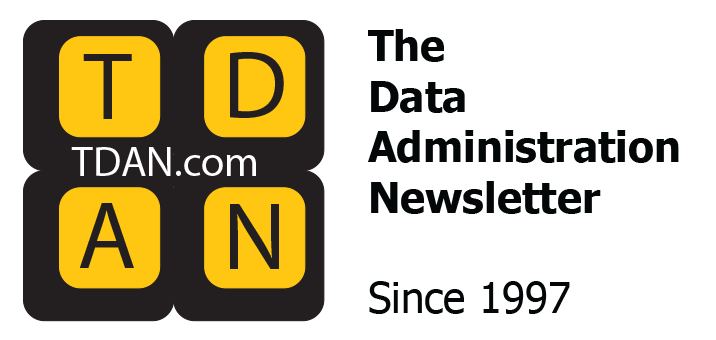
Current economic forecasts predict that the odds of a global recession will increase in 2025 due to various factors. A recession compels organizations to prioritize efficiency, compliance, and agility. The current period of economic uncertainty demands an all-hands-on-deck effort to mitigate operational risk.
Large projects are tabled under the threat of a recession. Staff and consultant levels are scrutinized intensely and often reduced. Management attention turns to enterprise risk management and efficiency. Until we have better visibility on the future economic direction, what can be done to strengthen our long-term position right now?
One seriously overlooked risk to an organization is the vulnerability related to tribal knowledge about data. Data dictionaries are often out-of-date or incomplete. The deep understanding of an organization’s data exists solely in the heads of the key subject matter experts, many of whom are too busy fighting fires to document what they know. These folks are often senior in tenure (highly paid) and can be targets of cost-cutting initiatives. Any project downtime is the perfect opportunity to put a process in place to document what they know about data. This includes definitions, known problems, proper record systems, and classification.
One recommended action step is to uncover the underlying data quality issues facing your organization. Data quality often takes a backseat without a strong external driver (e.g., audit or lawsuit). We talk about it, send people to conferences, and buy software, but we don’t turn this talk into action. This starts with investing time and resources to understand the root causes of your data problems.
The first phase in a data quality program is to take inventory of your data assets. You can’t improve or control what you don’t know. This goes to the heart of data risk management. Does your organization know where all your data exists, regardless of whether it is structured or unstructured? Is the system of record known? Is the data classified correctly, or at all? We have learned from Lean Manufacturing that data needs to be treated like any raw inventory — located, counted, classified, and managed. This is where legacy data knowledge proves invaluable.
Send your team on a treasure hunt for the scores of spreadsheets in your organization that contain the clues to these answers. While you’re at it, conduct a search of your metadata repositories. Ensure that someone in your organization takes ownership of this initiative, preferably someone from Risk Management or Data Governance. The findings must be controlled and accessible to all stakeholders. And not in spreadsheets.
Lean Manufacturing has taught us how to optimize raw inventory. Ultimately, companies reduced inventory requirements by placing material near where it was needed and eliminating redundancy. Quality was significantly improved at a lower capital investment. The same principles and benefits apply to our data management and system integration world.
Our previous TDAN columns have outlined how systems thinking approaches can drive out the root causes of any problem. This encourages organizations to view problems as part of a more extensive interconnected system rather than in isolation. It enables leaders to understand the complex interdependencies among various components of their organization, including departments, processes, and external factors. This leads to more effective problem-solving strategies and better resource allocation.
Organizations prioritizing data quality and governance position themselves for long-term success, strengthening day-to-day operations, including:
1. Decision-Making
Poor data quality can lead to misguided decisions, resource waste, and missed opportunities. A strong data quality program ensures access to reliable data, allowing organizations to respond more effectively to market shifts, changing customer needs, and operational challenges.
2. Risk Management
Economic downturns add uncertainty and risk. A robust data quality program helps organizations identify potential risks by providing accurate insights into various aspects of the business. With a clear understanding of data quality, organizations can mitigate compliance risks, avoid financial penalties, and enhance their ability to navigate regulatory requirements. Effective data governance frameworks also ensure that data-related risks are managed proactively.
3. Cost Efficiency
During periods of economic uncertainty, organizations will tighten budgets with an overall focus on cost. High-quality data can help minimize errors that lead to inefficiencies. A strong data governance program streamlines data management processes, eliminating redundancies and ensuring data is utilized effectively across the organization. This saves time and resources, which can be redirected to higher-value projects.
4. Enhanced Customer Insights
Understanding customer behavior is critical during a business slowdown, as purchasing patterns may shift dramatically. A robust data quality program enables organizations to collect and analyze accurate customer data, facilitating better segmentation and targeting. As a result, organizations can tailor their offerings and marketing strategies to meet changing customer needs, enhancing customer loyalty and retention.
Immediate survival is Job 1 during periods of heightened business risk. The action steps we’ve proposed on data quality contribute to lower costs today and help to future-proof your organization for whatever lies ahead. This is foundational work, no matter the state of the economy.
